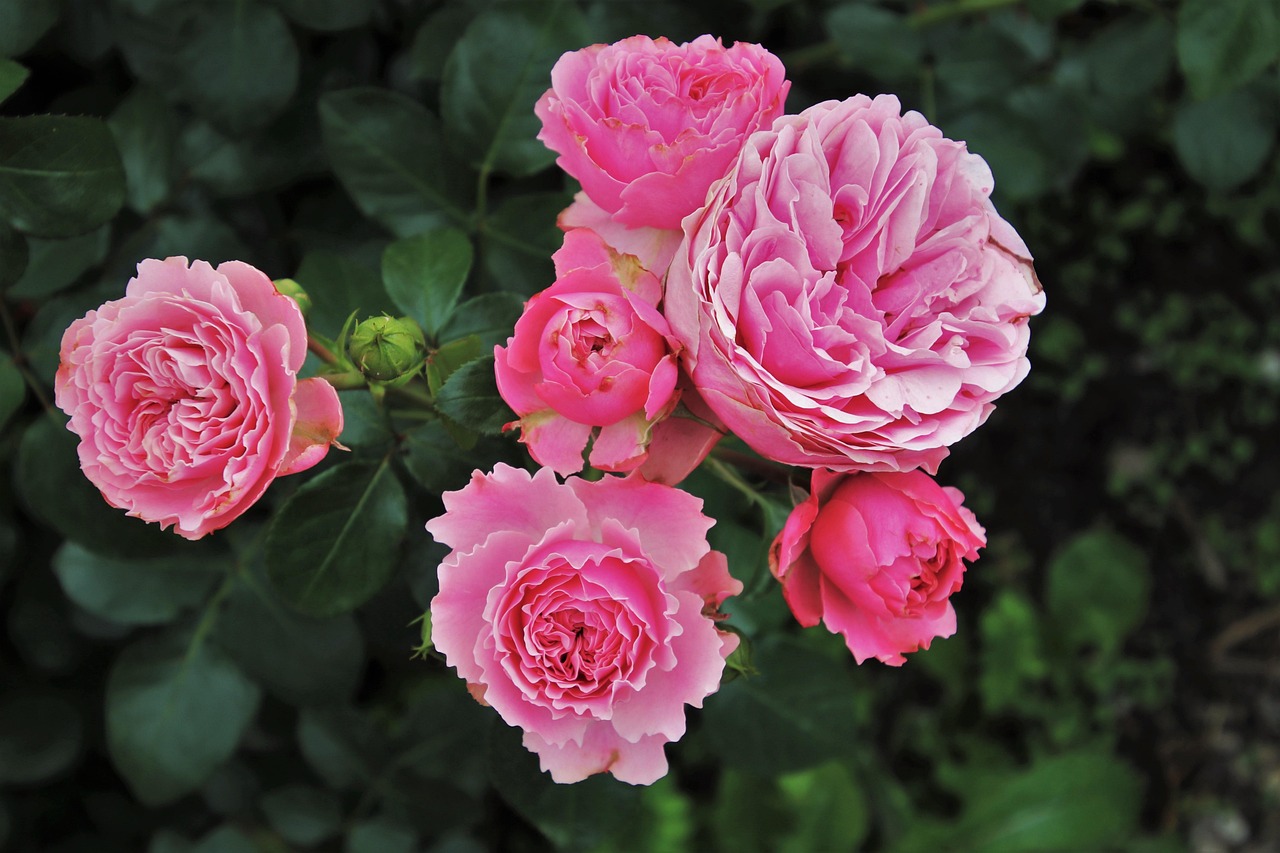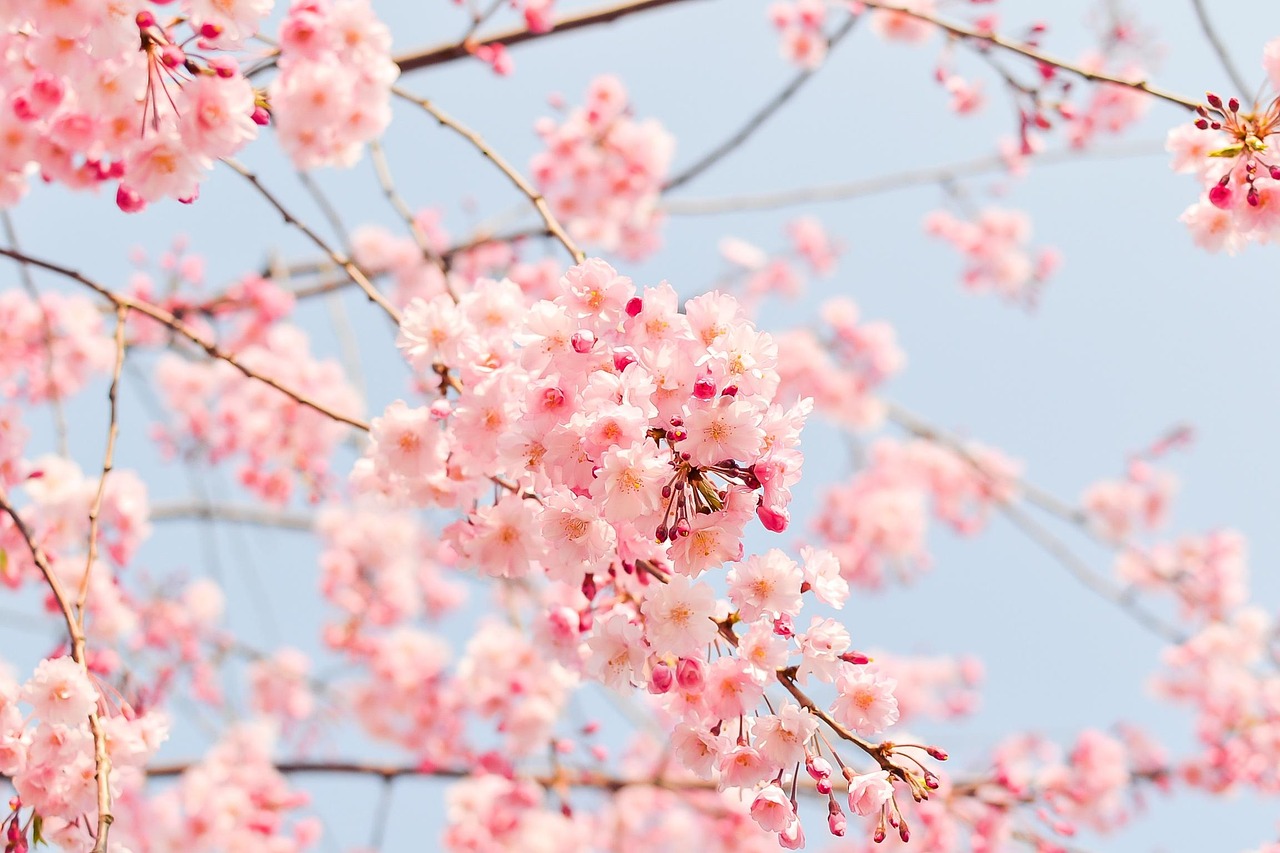When spring arrives, nature unveils a breathtaking display of colors, and few sights are as captivating as pink flowering trees. These delicate beauties are a symbol of renewal and hope, gracing landscapes with their vibrant blossoms and sweet fragrances. From cherry blossoms to magnolias, the allure of pink flowering trees captivates gardeners, nature lovers, and photographers alike.
The charm of pink flowering trees extends beyond their visual appeal. They evoke feelings of tranquility and joy, making them a popular choice for parks, gardens, and urban landscapes. Many cultures celebrate these trees, associating them with various meanings such as purity, love, and beauty. Each blossom seems to whisper secrets of nature’s artistry, drawing people closer to appreciate their splendor.

These trees are not just beautiful; they also play an essential role in the ecosystem. They provide critical habitats for various species of birds and insects, contribute to air quality by absorbing carbon dioxide, and offer shade during warmer months. Whether you are a horticulturist or simply someone who enjoys nature walks, understanding the unique characteristics of these trees can enhance your appreciation of the environment around you.
Types of Pink Flowering Trees
There is a diverse range of pink flowering trees that can bring color and life to any setting. Below are some popular varieties:
- Cherry Blossom (Prunus serrulata): Known for their stunning pink blooms, cherry blossoms are famous in Japan, where festivals celebrate their brief but spectacular display.
- Magnolia (Magnolia spp.): Magnolias feature large, fragrant flowers that bloom in early spring. Their soft pink petals are often complemented by glossy green leaves.
- Redbud (Cercis canadensis): This tree showcases small pink flowers that bloom along its branches in early spring, creating a stunning visual effect before the leaves emerge.
- Dogwood (Cornus florida): Dogwoods are admired for their unique flower structure. The blooms are often a soft pink or white and appear in spring alongside lush green foliage.
Choosing the right pink flowering tree for your garden or landscape depends on various factors, including climate, soil type, and available space. Below is a table highlighting some key features of these trees:
| Tree Type | Bloom Time | Height | Sunlight Requirements |
|---|---|---|---|
| Cherry Blossom | March to April | 15-25 feet | Full sun |
| Magnolia | March to May | 10-30 feet | Full sun to partial shade |
| Redbud | March to April | 20-30 feet | Full sun to partial shade |
| Dogwood | April to May | 15-30 feet | Partial shade |
The selection of these trees can transform any outdoor space into a picturesque haven. As we delve deeper into the world of pink flowering trees, we will explore their care requirements, ideal growing conditions, and the various ways to incorporate them into your landscape design.
With each tree offering its unique beauty and characteristics, the possibilities for creating stunning garden displays are endless. Embrace the charm of these delightful trees and watch your outdoor spaces come alive with their enchanting blooms.
Growing Pink Flowering Trees
Growing pink flowering trees can be a rewarding endeavor. With the right knowledge and preparation, you can cultivate these stunning plants in your garden. Understanding their specific needs is crucial to ensure they thrive and produce beautiful blooms.
Soil Requirements
The type of soil used can significantly impact the health of pink flowering trees. Here are some key points to consider when selecting and preparing the soil:
- Well-draining Soil: Most pink flowering trees prefer well-draining soil to prevent root rot. Sandy or loamy soils are often ideal.
- pH Level: A slightly acidic to neutral pH level (around 6.0 to 7.0) is optimal for many species.
- Organic Matter: Incorporating organic matter, such as compost, can enhance soil fertility and improve moisture retention.
Watering Practices
Proper watering is essential for the growth of pink flowering trees. Here are some effective watering practices:
- Regular Watering: Young trees require consistent moisture, especially during the first few years. Water deeply but infrequently to encourage deep root growth.
- Mulching: Applying a layer of mulch around the base can help retain soil moisture and regulate temperature.
- Seasonal Adjustments: Reduce watering during the winter months when trees are dormant, but ensure they receive adequate moisture in the spring and summer.
Sunlight Needs
The amount of sunlight a pink flowering tree receives influences its growth and blooming potential. Most species prefer:
- Full Sun: Trees like cherry blossoms and magnolias thrive in full sun, which means at least six hours of direct sunlight daily.
- Partial Shade: Some varieties, such as dogwoods, can tolerate partial shade, making them suitable for locations with dappled light.
Fertilization
To promote healthy growth and vibrant blooms, fertilization is often necessary. Consider the following tips:
- Timing: Fertilize in early spring as the growing season begins. This timing helps trees absorb nutrients during their active growth phase.
- Type of Fertilizer: Choose a balanced fertilizer with equal parts nitrogen, phosphorus, and potassium (N-P-K) or one specifically formulated for flowering trees.
- Avoid Over-fertilization: Too much fertilizer can damage roots and lead to excessive foliage at the expense of blooms.
Pests and Diseases


Pink flowering trees can be susceptible to various pests and diseases that may affect their health and beauty. Being aware of these issues can help you take preventive measures.
- Aphids: These small insects can damage young leaves and buds. Regular inspections and natural predators like ladybugs can help control their population.
- Mildew: Powdery mildew may occur in humid conditions. Ensure proper air circulation by pruning dense branches to minimize disease risk.
- Canker Diseases: Fungal infections like cankers can harm bark and branches. Promptly remove affected areas to prevent further spread.
By keeping these considerations in mind, you can create a thriving environment for your pink flowering trees. Their beauty will not only enhance your landscape but also provide a beneficial habitat for local wildlife.
Landscaping with Pink Flowering Trees

Incorporating pink flowering trees into your landscape design can create a stunning focal point and enhance the overall aesthetic of your outdoor space. These trees offer versatility in landscaping, allowing for various design styles, from formal gardens to naturalistic settings.
Design Ideas
Here are some creative ways to integrate pink flowering trees into your landscape:
- Focal Points: Position single pink flowering trees as focal points in your garden. Their vibrant blooms can draw the eye and create a stunning centerpiece.
- Flowering Borders: Plant a row of smaller pink flowering trees, such as redbuds or dogwoods, along pathways or borders. This creates a visually pleasing transition between different areas of your garden.
- Shade Trees: Use larger varieties like magnolias as shade trees in seating or gathering areas. Their broad canopies provide relief from the sun while adding beauty to the space.
- Mixed Plantings: Combine pink flowering trees with other plants that bloom at different times of the year. This ensures that your landscape remains colorful and vibrant throughout the seasons.
Complementary Plants
To enhance the beauty of pink flowering trees, consider pairing them with complementary plants. Below are some suggestions:
- Spring Bulbs: Daffodils and tulips bloom early in spring, complementing the blossoms of cherry and magnolia trees.
- Ground Covers: Low-growing ground covers like creeping thyme or ajuga can provide a lush green backdrop to highlight the tree’s blooms.
- Evergreens: Incorporating evergreens such as boxwood can provide year-round structure and contrast against the seasonal blooms of flowering trees.
Cultural Considerations
When planting pink flowering trees, consider their cultural significance and how they may enhance the theme of your garden. For example:
- Japanese Gardens: Cherry blossoms play a vital role in Japanese culture, symbolizing the transient nature of life. Integrating these trees into a Japanese-style garden can evoke tranquility and reflection.
- Romantic Gardens: The soft hues of magnolias and dogwoods can create an enchanting atmosphere, perfect for romantic garden designs or wedding venues.
Caring for Your Landscape
Maintaining the health of your pink flowering trees is essential for ensuring their longevity and beauty within your landscape. Here are some care tips:
Pruning Techniques
Pruning is an important practice that helps maintain the shape and health of your trees. Consider these techniques:
- Timing: Prune during the dormant season, typically in late winter or early spring, before new growth begins.
- Remove Dead Wood: Regularly inspect trees for dead or diseased branches and remove them to promote healthy growth.
- Shaping: Prune for shape to encourage an open canopy, allowing sunlight to penetrate and air to circulate.
Irrigation Strategies
Sustaining adequate moisture levels is crucial for the health of your pink flowering trees. Here are some irrigation strategies:
- Drip Irrigation: Consider installing a drip irrigation system that delivers water directly to the tree roots, minimizing water waste.
- Watering Schedule: Establish a consistent watering schedule during dry spells to ensure young trees receive adequate moisture.
By strategically designing your landscape and providing proper care for your pink flowering trees, you can create a vibrant and inviting environment that celebrates the beauty of nature. The delicate blooms will continue to inspire awe and admiration for years to come.
Final Considerations for Pink Flowering Trees
As you embark on the journey of incorporating pink flowering trees into your landscape, it is essential to remember that each tree species has its unique traits and requirements. Understanding these differences allows you to select the right species that will thrive in your local environment and meet your aesthetic goals.
In addition to the practical considerations of soil, water, and sunlight, consider the following elements when planning your garden:
- Seasonal Interest: Choose trees that not only provide stunning blooms in spring but also have attractive foliage or bark during other seasons. This ensures your landscape remains visually appealing year-round.
- Wildlife Benefits: Many pink flowering trees attract pollinators such as bees and butterflies, contributing to local biodiversity. This relationship enhances the ecological value of your garden.
- Maintenance Level: Assess how much time you can dedicate to care and maintenance. Some trees require more regular pruning and attention, while others are more low-maintenance.
Additionally, consider the climate and weather patterns in your area. Some pink flowering trees may struggle in extreme heat or cold, so selecting varieties suited to your region will lead to greater success. Research local species that have adapted well to your climate for the best results.
Conclusion
Pink flowering trees are a remarkable addition to any landscape, offering beauty, ecological benefits, and a sense of tranquility. From the elegant cherry blossoms to the majestic magnolias, each tree tells a story through its delicate blooms and graceful presence. By understanding their care requirements, selecting appropriate species, and thoughtfully integrating them into your garden design, you can create an enchanting outdoor space that reflects both nature’s artistry and your personal style.
As you nurture these trees, remember that they are not just ornamental; they symbolize renewal, hope, and the fleeting nature of beauty. Their blooms invite reflection and appreciation for the natural world. With proper care and attention, your pink flowering trees will flourish, providing joy for generations to come.
In conclusion, whether you are a seasoned gardener or a novice with a passion for nature, embracing pink flowering trees can transform your landscape into a vibrant sanctuary. The delicate beauty they offer will undoubtedly wow everyone who visits your garden.
